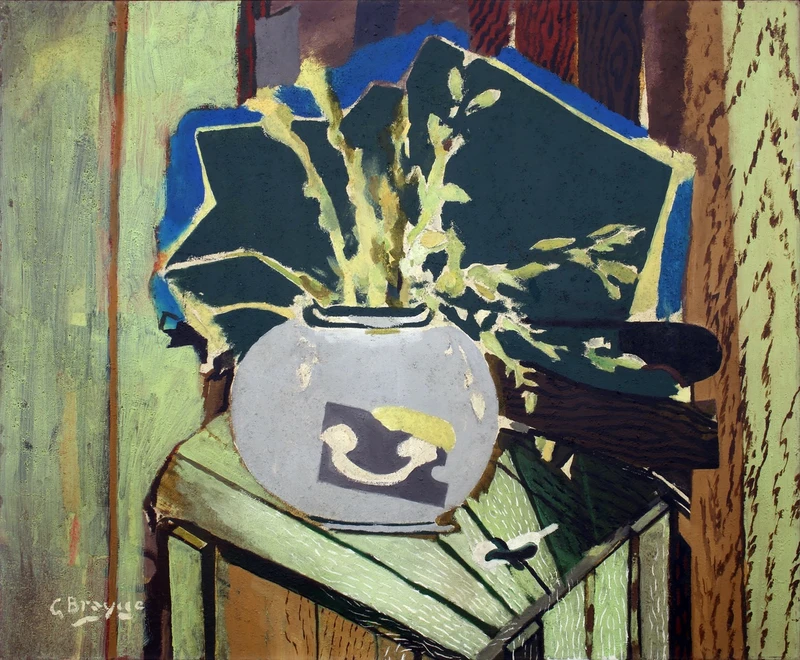Georges Braque: The Poetry of Things
4 Nov 2021-22 Jan 2022


The First Solo Exhibition of Georges Braque in London since 1997.
Bernard Jacobson Gallery will hold the first solo exhibition of Georges Braque in London since Braque: The Late Works at the Royal Academy, nearly 25 years ago. The exhibition will bring together more than 15 still-life paintings, made between 1922 and the 1950s.
Born into a family of painter-decorators, Georges Braque was introduced to art from a young age. After moving from the outskirts of Paris to Le Havre, Normandy, he learnt the techniques of the family business, and refined his talents at local art classes. Through these classes, he would meet the likes of Raoul Dufy and Othon Friesz, with whom he would share ideas and eventually join the Fauve movement. This involvement was, however, short lived. Unimpressed by the strict rules of Fauvism and its reliance on colour, Braque sought to paint in a different manner, one which would prioritise composition, structure and perspective. Through focusing on these elements, Georges Braque came to invent Cubism, a revolutionary movement that would shake-up the art world and become the single greatest innovation in painting since the discovery of perspective in the Renaissance. Collaborating with Pablo Picasso, working unceasingly, in a continuous and productive friendship that built up momentum around the radical Cubist ideas. These elements that Braque created would remain with the artist for the entirety of his career, and although he moved on from the movement, he would often embed certain Cubist ideas within his later works, as seen in Verre et compotier (1922), a still-life in which the artist incorporated lettering from the title page of a newspaper (Le Petit Journal).
Long after Cubism ended, Braque remained focused on spatially ambiguous compositions, changing the meaning and essence of objects by focusing on structure and pictorial relationships as opposed to their purpose; as can be seen with Théière noire et deux citrons (1948). Here, the forms of the teapot and the lemons within their setting assume a more integrated role than the meaning of the objects themselves. In the words of the late Mel Gooding, “an object in itself is of no great consequence (however beautiful and necessary it may or not be), for in a painting such an object may always be replaced by some other pretext for painterly proposition...its vital reality now exists in the unique poetic space of the painting. The object has no other reality but that of the image, held as it is within a harmony of expressive gestures, shapes, forms, colours, tones, shadow and light, a transcendental reality beyond immediate sight and touch, a poesis perpetualis that resonates in the mind and heart”.
Braque went on to have a long and acclaimed career and his still-life paintings reached their apotheosis in the great Atelier Paintings of the late 40s and 50s. Whenever Picasso visited Douglas Cooper in Provence, he would admire the magnificent Atelier VIII, which hung above Cooper’s bed, and would bemusedly mutter “comprends pas, comprends pas.”
By the 1960s, he was regarded internationally as one of the very greatest 20th Century artists, and in 1961 the first ever retrospective exhibition of a living artist was held at the Louvre, entitled L’Atelier de Braque. This would not be the last time the Louvre would honour Georges Braque. In 1963, following his death on the 31st August, André Malraux organised a state funeral in the courtyard of the museum, an immense honour only accorded to the greatest leaders and artists of France.
Georges Braque: The Poetry of Things will include a fully illustrated catalogue with an essay by the art historian and critic Mel Gooding who sadly recently passed away.